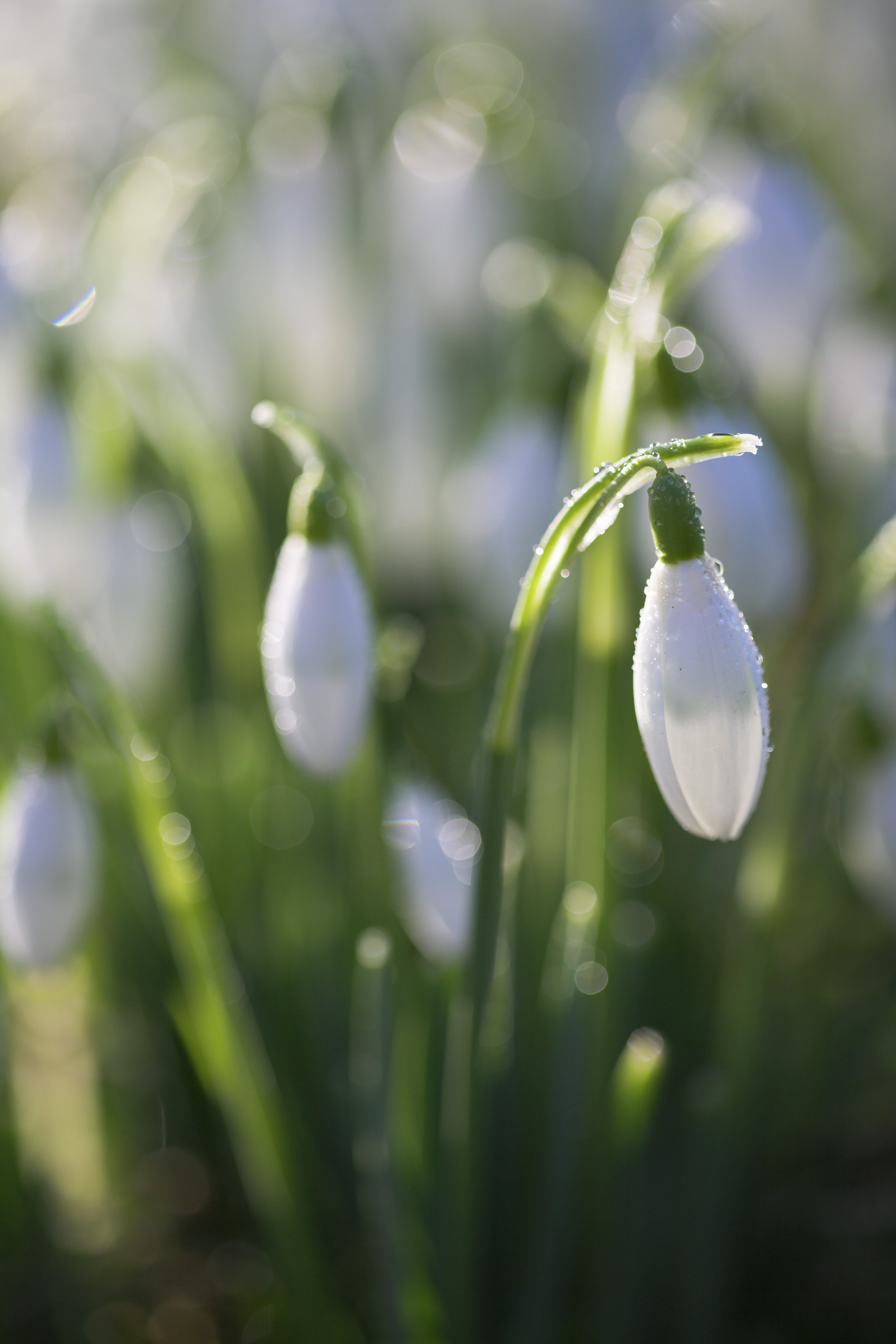February 2024
Snowdrops. Hope from the underworld
I’m pretty sure all of us in the UK this year will revel in the sight of snowdrops, they have a fascinating and wonderfully happy association with the changing of the seasons and with that of course a sense of hope. It’s one of the things I love about plants, they remind us in the darkest of days and the darkest of moods that with life there is always hope.
It’s unsurprising therefore that as one of the main signallers of winter’s passing that snowdrops are beloved and have found their way into the tales of folklore and faith.
These plucky little plants have been revered for generations. Emerging in the failing brutal harshness of winter and with the increasingly tepid rays of spring sunshine these pendants of purity and the freshest of greens are some of the first bulbs to flower, leading the way for crocus, daffodils and narcissi, hyacinth and tulips. The pathfinders of the bulb season. There are around 20 natural snowdrop varieties found from Europe right through to Middle Eastern countries, ones to suit all sorts of micro climates and conditions.
Celebrated in Greek mythology, the snowdrop symbolises the very essence of Persephone emerging from the underworld to shine again in the spring. In Christianity, tales are told of the snowdrop being created by an angel who gave them to Adam and Eve as a symbol of hope when they were thrown out of Eden. Celtic beliefs celebrate the snowdrop during ‘imbolc’ - traditional festivities summoning the spring and roughly half way between the winter solstice and spring equinox (also known as Candlemas in Christian faiths). Colour-wise, the white bells symbolise the coming of spring light and the green, wellbeing. Additionally their colour is also thought to represent that of milk, the milk of human kindness, the nourishment of life, and their emergence coincides with the lactation period of sheep and goats. The latin for our native variety Galanthus nivalis sharing the word for milk (Gala) and flower (anthos).
An alternative name for snowdrops is ‘snowbells’, ringing in the changing conditions and marking the start of the growing season. A sense of cleanliness and purity, a fresh start, time to try again. In parts of England it is traditional to have the snowdrops inside to help purify the house, but in others there is a strong association with dying. They love a good church yard which provides perfect conditions for them to thrive. This association was particularly ‘popular’ during Victorian times and a bunch of snowdrops would be just the thing for a gothic drama wouldn’t they? Drifts of snowdrops are hugely popular during Victorian times and this is reflected in our larger garden such as at the Gothic mansion Painswick Rococco Garden in Gloucestershire and Welford Park in Berkshire. We pay to walk amongst them, a sort of forest bathing if you like, to see but not smell, to look and not touch, but to welcome in a new flowering year. There are festivals dedicated to these robust little plants where you can buy, eat and wear anything snowdrop related. One of the most newly established being in Shaftesbury, Dorset which was begun to mark the Diamond Jubilee of Queen Elizabeth II.
Snowdrops in the wild often carpet woodland edges, their preferred spaces for light and warmth. They almost seem to me like the frosting on the edges of woodlands or streams, the transition zone where life thrives and is the first to jump into action given the right signals following the slumber of autumn and winter.
Highly prized by horticulturalists, there are now 1000s of named cultivars, some exchanging hands for big prices, showing that these incredible first flowers of the season have such high value to us. Flowers are often symbolic, there is a language of flowers and with the snowdrop there is no doubt that it has a deep and meaningful relationship with us. They may even hold medicinal secrets that can assist in the treatment of dementia it has recently been found.
But it’s not just us that they benefit, as one of the very first flowering plants of the year, their golden orange pollen and nectar is prized by bees, hungry to begin foraging again and fortify their colonies, a sure sign that more abundant times are ahead. Bees benefit most from single flowers such as our native Galanthus nivalis. Luckily, these plucky perennials are as tough as tough and return year after year just when you think that hope is gone, they shine brightly through the undergrowth and restore faith in the year ahead.
Photographically, they are simple flowers that lend themselves to simple compositions in close up situations and blankets of colour en masse. You’ll need to watch out for spiders, and slugs and snails as they are very fond of decorating them with webs and munching the fleshy petals and stalks, and don’t forget the bell shapes open up wider and wider in the sun, to full blown umbrellas!




